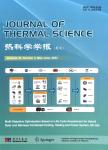Supercritical Fluid Media in Challenges of Substance and Material Dispersion
Supercritical Fluid Media in Challenges of Substance and Material Dispersion出 版 物:《Journal of Thermal Science》 (热科学学报(英文版))
年 卷 期:2019年第28卷第3期
页 面:519-546页
核心收录:
主 题:supercritical fluid media supercritical fluid anti-solvent method dispersion polycarbonate paracetamol ethylene-vinyl acetate copolymers
摘 要:The paper deals with the problem of material dispersion using supercritical fluid media. At the same time, emphasis is made on modifications(SAS, GAS, SEDS and ASES) of the supercritical fluid anti-solvent method of dispersion. The results of SAS method implementation for dispersion of pure polycarbonate and polycarbonate doped with CdSe/CdS-core/shell quantum dots(carried out in the pressure range of 8.0-25.0 MPa at temperatures of 313.15 K and 358.15 K) are submitted. The range of the operating parameters has been established through the example of pure polycarbonate dispersion, which provides the production of nanoparticles with the size range of 10-100 nm. Encapsulation of Cd Se/Cd S quantum dots into polycarbonate using the SAS method has no effect on optical properties of the encapsulated quantum dots. The results of paracetamol dispersion using the SEDS method are presented. The effect of operating conditions of the paracetamol dispersion process on morphology of the obtained product is described. Co-dispersion of ethylene–vinyl acetate copolymers and low-density polyethylene mixtures by SEDS method has been carried out under pressures of 8.0-25.0 MPa at temperatures of 313 K, 323 K, and 333 K. The comparison of melting and crystallization between the resulting copolymer mixtures and mixtures with the same composition obtained by mixing in the liquid melt, has shown that implementation of SEDS results in an increase of crystallinity degree of the polymer mixtures.



